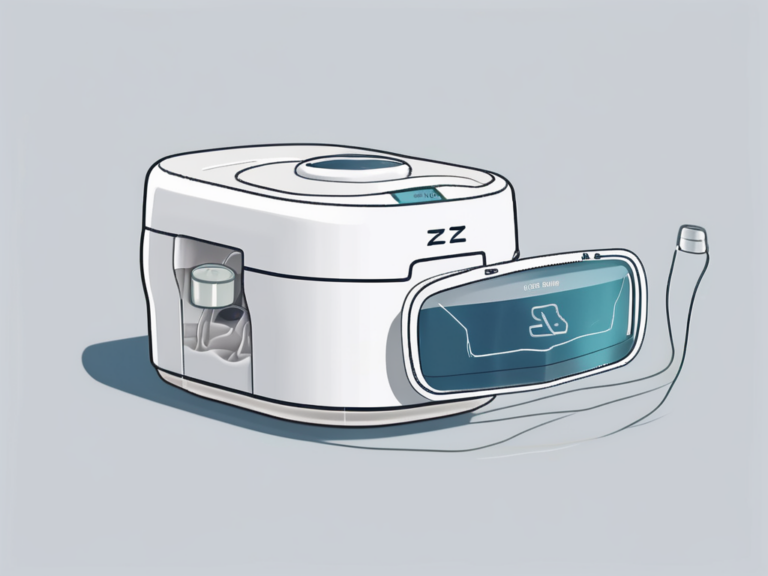What Are Some Tips for Getting My Child to Sleep Through the Night?
Helping your child establish healthy sleep habits is an essential part of their overall well-being. As a parent, it can be challenging to navigate the ups and downs of your child’s sleep patterns. However, by understanding their needs and implementing effective strategies, you can create a conducive sleep environment and establish a consistent bedtime routine. This article will explore various tips and techniques to support your child in sleeping through the night.
Understanding Your Child’s Sleep Patterns
Before implementing any sleep strategies, it is important to understand your child’s natural sleep patterns. Children, especially infants and toddlers, require more sleep than adults, and their sleep needs change as they grow. By recognizing their unique sleep cues, you can ensure they get the amount of sleep they need.
Did you know that newborns sleep for an average of 14 to 17 hours a day? As they grow, their sleep patterns gradually change. By the time they reach six months old, most babies need around 13 to 15 hours of sleep, including naps. It’s fascinating to observe how their sleep needs evolve as they develop.
The Importance of Consistent Bedtimes
Establishing consistent bedtimes is crucial in helping your child develop healthy sleep habits. A regular sleep schedule helps regulate their internal body clock and promotes better quality sleep. Aim for a consistent bedtime every night, even on weekends, to help your child get into a routine and signal to their body that it’s time to sleep.
Consistency is key when it comes to bedtime routines. Creating a calming and predictable routine before sleep can help your child wind down and prepare for rest. This may include activities such as reading a bedtime story, taking a warm bath, or listening to soothing music. These routines not only signal to your child that it’s time to sleep but also provide a sense of security and comfort.
Recognizing Sleep Cues in Your Child
Every child exhibits different sleep cues that indicate they are tired and ready for sleep. Look out for signs such as rubbing their eyes, yawning, or becoming fussy. By recognizing these cues and responding promptly, you can help your child transition to sleep more easily and prevent overstimulation that may lead to difficulty falling asleep.
It’s important to note that sleep cues may vary from child to child. Some children may become quiet and withdrawn when tired, while others may become hyperactive or clingy. By paying close attention to your child’s individual cues, you can better understand their sleep needs and provide the appropriate support.
Creating a Conducive Sleep Environment
The environment in which your child sleeps plays a significant role in their ability to fall asleep and stay asleep throughout the night. Consider the following factors when creating a sleep-friendly environment:
The Role of Bedroom Temperature and Lighting
Maintaining a comfortable room temperature and appropriate lighting can greatly impact your child’s sleep. Keep the bedroom slightly cooler, around 68 to 72 degrees Fahrenheit, to promote optimal sleep. This temperature range helps regulate your child’s body temperature, preventing them from feeling too hot or too cold during the night. Additionally, ensure the room is dark and use blackout curtains or blinds to block out any external light sources that may disrupt their sleep. Darkness signals to the brain that it’s time to sleep, helping your child fall asleep faster and stay asleep longer.
When it comes to lighting, consider using soft, dim lights in the bedroom during the evening and bedtime routine. Harsh or bright lights can interfere with the production of melatonin, a hormone that helps regulate sleep-wake cycles. By creating a calm and soothing atmosphere with gentle lighting, you can help your child’s body naturally wind down and prepare for sleep.
Choosing the Right Bedding and Sleepwear
The bedding and sleepwear your child uses can also influence their sleep quality. Opt for comfortable, breathable fabrics that are appropriate for the current season. Natural materials like cotton or bamboo are excellent choices as they allow air to circulate, preventing your child from overheating or feeling sweaty during the night. These fabrics are also soft and gentle on the skin, promoting a cozy and comfortable sleep environment.
Avoid using blankets or pillows for infants to reduce the risk of suffocation. Instead, consider using wearable blankets or sleep sacks that provide warmth without hazards. These sleepwear options are designed to keep your baby snug and secure throughout the night, ensuring a safe and peaceful sleep. For older children, choose pillows and blankets that are age-appropriate and provide the right level of support and comfort.
Establishing a Bedtime Routine
A consistent bedtime routine helps signal to your child’s body and mind that it’s time to wind down and prepare for sleep. When establishing a bedtime routine, incorporate activities that promote relaxation and create a sense of calmness:
The Power of Bedtime Stories
Reading bedtime stories not only enhances your child’s language and literacy skills but also helps them relax and unwind before sleep. Choose age-appropriate books and make it a special bonding time between you and your child. Dim the lights and create a cozy atmosphere to enhance the calming effect.
As you dive into the magical world of storytelling, your child’s imagination takes flight. They embark on adventures with brave heroes, explore enchanted lands, and encounter mythical creatures. The characters come to life, captivating their young minds and whisking them away to a place where dreams and reality intertwine.
With each turn of the page, your child’s curiosity grows, and their vocabulary expands. They learn new words, explore different emotions, and develop a deeper understanding of the world around them. Bedtime stories become a gateway to knowledge, sparking their creativity and nurturing their love for learning.
Incorporating Relaxation Techniques
Introducing relaxation techniques into your child’s bedtime routine can aid in promoting sleep. Activities such as gentle stretching, deep breathing exercises, or listening to soft music are all effective ways to help your child unwind and prepare for a good night’s sleep. Experiment with different techniques to find what works best for your child.
Imagine your child lying comfortably in bed, their little body relaxed and their mind at ease. As they take deep breaths, they feel the tension melt away, replaced by a soothing sense of tranquility. The gentle stretches release any remaining tension in their muscles, leaving them feeling light and peaceful.
Soft melodies fill the air, creating a serene ambiance that lulls your child into a state of deep relaxation. The soothing sounds wrap around them like a warm embrace, guiding them towards a restful slumber. Their breathing becomes slow and steady, syncing with the gentle rhythm of the music, as their body prepares for a night of rejuvenating sleep.
By incorporating these relaxation techniques into your child’s bedtime routine, you are providing them with the tools to navigate the challenges of the day and find solace in the tranquility of the night. As they drift off to sleep, their dreams become a sanctuary where their imagination can roam freely, and their mind can recharge for the adventures that await them in the morning.
Addressing Nighttime Fears and Anxiety
Nighttime fears and anxiety can disrupt your child’s sleep and make it challenging for them to fall asleep or stay asleep throughout the night. Here are some strategies to help address these concerns:
Comforting Your Child After Nightmares
If your child experiences nightmares, provide comfort and reassurance when they wake up. Offer a comforting presence, engage in soothing activities, and provide verbal reassurance that they are safe. Use a nightlight if it helps to alleviate their fears of the dark.
Easing Separation Anxiety at Bedtime
If your child struggles with separation anxiety at bedtime, gradually introduce a transition routine to help them feel more secure. This could involve sitting with them until they fall asleep or gradually increasing the distance between you. Reassure your child that you will be nearby and establish a consistent routine until they feel more comfortable sleeping alone.
Additionally, it is important to create a calm and relaxing environment in your child’s bedroom. Consider using soft, neutral colors on the walls and incorporating comforting elements such as plush toys or a cozy blanket. These items can provide a sense of security and help your child feel more at ease during bedtime.
Furthermore, establishing a consistent bedtime routine can greatly reduce nighttime fears and anxiety. A routine can include activities such as reading a bedtime story, taking a warm bath, or practicing deep breathing exercises. By following the same sequence of events each night, your child will develop a sense of predictability and comfort, making it easier for them to transition into sleep.
Dealing with Nighttime Wakings
Nighttime wakings are a common occurrence in young children. Understanding how to respond appropriately can help your child learn to self-soothe and go back to sleep independently:
The Do’s and Don’ts of Nighttime Soothing
When your child wakes up crying or needing attention during the night, it’s important to respond in a way that promotes their ability to self-soothe and go back to sleep. Comfort and reassure your child, but avoid creating sleep associations that require your presence to fall asleep. Gradually decrease your involvement over time, allowing your child to learn the valuable skill of self-soothing.
Teaching Your Child to Self-Soothe
Teaching your child to self-soothe is a valuable skill that promotes better sleep habits. Encourage independent sleeping by setting boundaries and expectations. Provide your child with soothing objects, such as a favorite stuffed animal or a soft blanket, to help them feel comforted when waking up during the night.
Additionally, establishing a consistent bedtime routine can greatly contribute to your child’s ability to self-soothe and sleep through the night. A predictable routine signals to your child that it’s time to wind down and prepare for sleep. This can include activities such as reading a bedtime story, taking a warm bath, or practicing relaxation techniques like deep breathing or gentle stretches.
Furthermore, creating a sleep-friendly environment can play a significant role in reducing nighttime wakings. Ensure that your child’s bedroom is dark, quiet, and at a comfortable temperature. Consider using blackout curtains to block out any external light sources that may disrupt their sleep. White noise machines or soft lullabies can also help drown out any background noise that might disturb your child’s rest.
Nutrition and Sleep
The food and drinks your child consumes can have a significant impact on their sleep quality. Ensuring that they have a healthy and balanced diet can greatly support their ability to get a good night’s sleep. Let’s explore some additional tips and information to further enhance your child’s sleep through nutrition.
Foods That Promote Sleep
Incorporating sleep-friendly foods into your child’s diet can play a crucial role in regulating their sleep patterns. While it’s true that a warm glass of milk before bed has been a traditional remedy for inducing sleep, there are other foods that can also contribute to a restful night’s sleep.
For example, bananas are a fantastic choice due to their high levels of potassium and magnesium. These minerals help relax the muscles and promote a sense of calmness, making it easier for your child to fall asleep. Cherries, on the other hand, are a natural source of melatonin, a hormone that regulates sleep-wake cycles. Including whole grains in your child’s diet, such as oats or quinoa, can also be beneficial as they contain complex carbohydrates that help increase serotonin levels, promoting relaxation and better sleep. Additionally, certain nuts and seeds, like almonds and pumpkin seeds, are rich in tryptophan, an amino acid that aids in the production of sleep-inducing hormones.
The Impact of Sugar and Caffeine on Sleep
While it’s important to focus on incorporating sleep-promoting foods into your child’s diet, it’s equally crucial to be mindful of what to avoid. High amounts of sugar and caffeine, especially close to bedtime, can have a detrimental effect on their ability to fall asleep and maintain good sleep quality.
Sugar, found in various forms such as sweets, sugary drinks, and processed foods, can lead to a spike in energy levels and make it difficult for your child to wind down at night. Caffeine, commonly found in coffee, tea, energy drinks, and even some sodas, is a stimulant that can interfere with the natural sleep-wake cycle. It’s important to limit or avoid these substances, especially in the evening, to ensure your child’s sleep is not disrupted.
By being mindful of the foods your child consumes and making informed choices, you can greatly contribute to their overall sleep quality. Remember, a well-nourished body is more likely to experience restful and rejuvenating sleep, setting the stage for a healthier and happier child.
When to Seek Professional Help
If you have tried various strategies and your child continues to experience persistent sleep issues, it may be beneficial to seek professional help. Look out for signs of sleep disorders such as chronic snoring, frequent night awakenings, or excessive daytime sleepiness. Consulting a pediatric sleep specialist can provide valuable insights and guidance tailored to your child’s specific needs.
When it comes to your child’s sleep, it’s important to remember that every child is unique. While some children may respond well to simple strategies like creating a conducive sleep environment and establishing a bedtime routine, others may require additional support. This is where the expertise of a pediatric sleep specialist can make a significant difference.
A pediatric sleep specialist is a healthcare professional who specializes in diagnosing and treating sleep disorders in children. They have in-depth knowledge of the various sleep disorders that can affect children, such as sleep apnea, insomnia, and restless leg syndrome. By consulting a specialist, you can gain a better understanding of your child’s sleep patterns and identify any underlying issues that may be contributing to their sleep problems.
During a consultation with a pediatric sleep specialist, they will conduct a thorough evaluation of your child’s sleep habits and medical history. They may also recommend additional tests, such as a sleep study, to gather more information about your child’s sleep patterns. Based on their findings, the specialist will develop a personalized treatment plan tailored to your child’s specific needs.
Working closely with a pediatric sleep specialist can provide you with valuable insights and guidance on how to address your child’s sleep issues effectively. They can offer practical strategies and techniques to help your child establish healthy sleep habits and overcome any sleep-related challenges they may be facing.
Remember, finding the right strategies to help your child sleep through the night may take time and patience. It’s important to approach the process with a positive mindset and be open to trying different approaches. With consistent efforts and the support of a pediatric sleep specialist, you can help your child develop healthy sleep habits that will benefit them for years to come.






